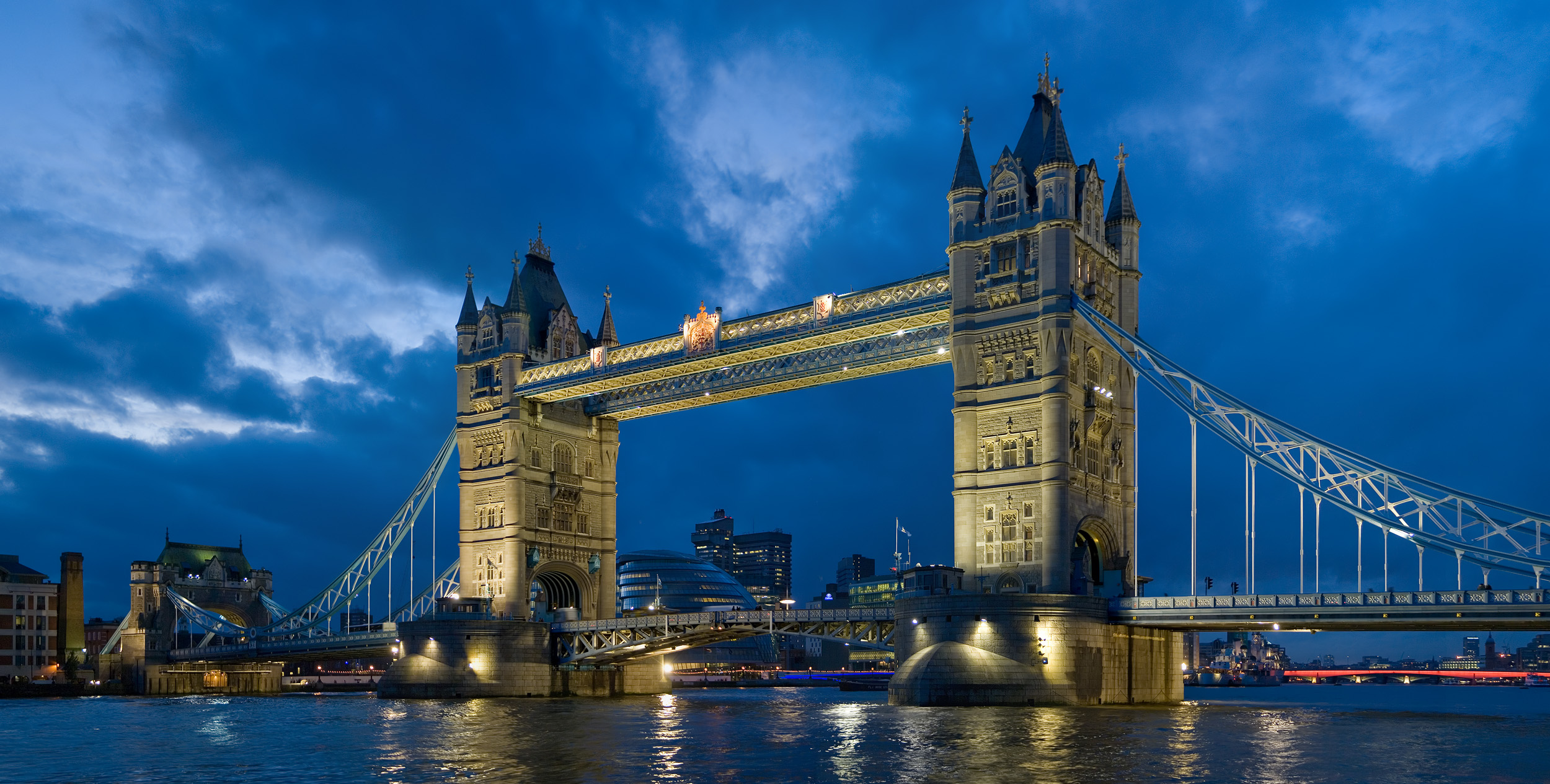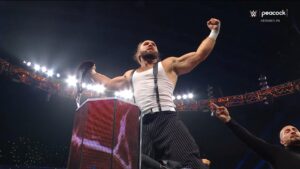If it wasn’t obvious already how valuable both WWE and AEW view the UK as a market, it’s becoming even clearer.
AEW announced last night they are bringing Dynamite and Collision to Cardiff, Wales prior to All In. Last year, Tony Khan coyly told BBC West Midlands Radio that the August 27th show at Wembley would be the only show the promotion would bring to the UK that year.
Elsewhere, Triple H has talked about the possibility of a WrestleMania in London. The Mayor of London himself, Sadiq Khan even brought it up as an election promise if he was voted back into office.
It is also quickly becoming a tradition now, with WWE’s international PLE model in full globetrotting mode, it seems a given now there will be at least one big show in the UK each year, beyond the usual house show tours.
Even TNA Wrestling is gearing up for another tour this year after bringing its Turning Point PPV to Newcastle last year. After an eight-year absence from Britain, TNA again wants to take advantage of our appetite for wrestling.
As discussed by my colleague, Will Gray, a new cold war is here. The UK, for the moment, remains a neutral territory. NXT UK is gone and whether NXT Europe takes shape is debatable. Historically, the UK has provided returns for the major companies who have invested in our fans.
Our enthusiasm, passion, and desire to watch the best in sports, entertainment, and wrestling have provided shows with electric, near-deafening atmospheres. Our willingness to pay, even as prices increase, makes us attractive from a business standpoint.
The Summer of ’92 Mythology
Last summer, when AEW capitalised on wrestling history and nostalgia by hosting a massive summer event at Wembley Stadium, comparisons were made to the first iconic Wembley show. WWE’s SummerSlam 1992 still lives in the psyches of UK wrestling fans as a modern myth because, even if they were not born during that time or like myself were not yet a fan, it’s remained a gold standard in our wrestling fandom.
It eclipses the golden age of the UK’s own wrestling scene, best encapsulated by World of Sport. To be fair, the difference between watching the spectacle of two giants, Big Daddy vs. Giant Haystacks compared to the athletic fluidity of Bret Hart vs. The British Bulldog is like Whacky Racers vs. Formula One.
Hart vs. Bulldog was my favourite match as a teen. I remember watching it on a free DVD that came with a red-top newspaper. Culturally, it’s easy to understand why.
Beyond its legacy and record of 78,927 attendees (the actual attendance figures), the event became mythologized as a success in the UK. Especially given the average attendance in the states was 4,743 attendees per show for ’92. Dropping to its worst in ’95 to 2,902 per show. For years fans have clambered for a repeat.
On the gate, WWE made $3,650,000 ($8,170,718.82 in today’s currency) at a time when WWE was in decline. However, WWE viewed the event as a flop. Triple H stated this to The Mirror in 2018.
In terms of PPV buys, SummerSlam had dropped from 405,000 buys in 1991 to 280,000 buys in ‘92. However, it was part of a pattern as numbers continued to drop in ’93 to 230,000 buys for the next SummerSlam.
Bank of England
Yet, the UK has remained a valuable market to WWE, who from 1989 on Sky TV channels onwards until 2003 held UK-exclusive televised events and PPVs. The Fed’s competition likewise also tried to gain a foothold in the UK.
WCW toured the UK for the first time in 1991 as part of their “Roar Power” tour. The significance of this on wider wrestling history is that one Blackpool lad, the future William Regal was signed by WCW and came to the states. WCW came back to the UK for the next three years.
In 1993, Sting beat Vader for the WCW World Heavyweight Championship in London. Sting then dropped the championship back to Vader in Dublin, Ireland. A city WWE avoided due to “The Troubles”.
The British Bulldog was on top of the card and the wrestlers were not booked into a hotel in the city due to a car bombing earlier in the day. 1994 saw Hulk Hogan main event a show at Wembley Arena. Only in the 2000s would WCW return with the Millennium Tour.
In the 2010s, ROH and TNA Wrestling would tour the UK. TNA, which had a wider reach to UK wrestling fans due to airing on the Freeview (free to access) channel Challenge rather than the cable/subscription-based Sky and Sky Sports. The promotion even sought to capitalise on the larger audience with two series of a Tough Enough-inspired reality TV show, British Bootcamp.
Why So Long?
The reasoning for why no further PPVs came to the UK related to costs of overseas production and time differences. Eric Bischoff stated as much when asked why WCW, at its height of popularity, did not run any UK shows or even a PPV:
“Without the right promoter, which we did not have in place, it was always challenging combined with the incremental costs with going overseas to promote a pay-per-view, and just the logistics of it. You know, we had to be on at eight o’clock eastern to 11 o’clock eastern here in the US, and the time difference in the UK made that a challenge in and of itself.”
83 Weeks, Eric Bischoff, transcript from 411Mania.com
It echoes comments made by WWE Executive Director, Bruce Prichard, who brought up the concerns. Yet this mindset could change given WWE’s revenue model moving from PPVs to the WWE Network:
“I think with the Network and the technology today I don’t see having a pay-per-view in the UK, and the obstacles that were there previously, I don’t see them anyone… We talked about a UK show a lot when I was there, but with advent of the Internet there was a strong worry that pay-per-view results would be released ahead of time. That was a big deterrent. Now I think you could have a UK show and release it globally live on the Network and people are going to tune in. I think those obstacles have gone and it’s simply only a matter of time before that happens.”
Bruce Prichard, TalkSport
AEW Did What WWE Would Not, Yet WWE Gets Something Bigger
Last summer, AEW, removing the inflated numbers, still beat WWE’s Wembley attendance record with 79,346 fans. It was reported by Dave Meltzer that WWE had the opportunity to perform at Wembley in 2022. Instead, WWE picked Cardiff and the Principality Stadium for the first Clash at the Castle.
The reasoning: money. WWE was paid £2.18 ($2.78) million for the event. WWE has been able to find a financial model where international cities, such as Perth paid over $5 million for Elimination Chamber.
In return, the Welsh economy gained £21.8 million back from tourism. Western Australia, according to Tourism Council WA, generated $35.2 million in revenue.
It’s a lucrative business model that WWE rightly wants to proceed with. Beyond history, it makes business sense to prioritize taking PLEs to cities that are willing to pay. It’s a symbiotic relationship.
It’s something WWE is perhaps hoping to bring to negotiations with the London Mayor. However, how much would the dream of an international WrestleMania in London cost?
AEW’s UK Presence
AEW, on the other hand, does not have the history or cultural capital that the three letters WWE comes ready packaged with. Contrastingly, compared to WWE, and like WWE’s opposition before them, AEW has a wider reach in the UK.
Airing on ITV4, AEW shows reaches 18 million households compared to TNT Sports (the current home of WWE television), which has an 8-million households reach.
Although AEW has sold at present 40,000 tickets for All In this summer, the Stadium is set up for 50,708 individuals. It’s still a large number given Clash at the Castle, by comparison, held 11,391 fans out of a 12,000 set up.
The additional announcement that AEW is bringing its flagship TV shows Dynamite and Collision for a taping on the Wednesday before All In creates a mini tour at two ends of southern Britain. From a wrestling standpoint, it means more AEW wrestlers may get to compete in the UK, and for AEW fans.
Another opportunity to watch four additional hours of “Where the best wrestle”. How tickets sell will yet to be seen.
The Utilita Arena has a capacity of 5,000 seats so, in theory, this is sellable in a hot market. There are risks due to the financial situation of the UK economy that will impact many fans. It’s something both promotions need to consider carefully in their plans for British live events and shows.
High Costs
Last year, All In tickets cost me and my partner a combined nearly £500. Plus £108 for travel. Excluding the cost of merchandise. Or the eye-watering prices of a bottle of water (with no screw top lid) and food.
For this year’s tickets, I paid less for seats higher in the stadium for a total of £317, including bus travel. That’s a lot of money still, but cash is tighter.
We had to pay for new furniture. Now our washing machine may have just packed in. My car just cost me over £500 in repairs.
Our mortgage and bills are going up and we’re still incredibly lucky. And we are fortunate to both have jobs and side-hustles.
There was controversy over the cost of Clash of the Castle tickets. With prices starting at £300+ for tickets to both SmackDown and the PLE, is it surprising WWE broke records?
The cost of the sum clashed with the show’s controversial ending. Many enjoyed the storyline progression but, for fans paying large sums of money, the wrestling outcomes may make the difference on if they attend the next PLE in the UK.
I read one person on X who stated that, after WWE failed to crown Drew McIntyre as champion in his hometown and home nation, it made the £700 they spent that week feel wasted. Not all will agree, plenty likely found it value for money.
Cost of Living Crisis
Glasgow is one of the most socially and economically deprived cities in the UK. Poverty is an issue not just in Glasgow, but in large parts of the UK.
The North of England compared to the south is economically divided. A general election is imminent. The cost of living is one of the major issues of debate and a concern for many British voters.
Food banks have gone up and social services stretched. And strangely, my local MP, Michelle Donelan, actually worked for WWE as an international marketing communications manager!
I did not include the last section as a sob story. Nor is it about guilt-tripping. It’s about context.
In the short term, there is the reality some fans are and will be priced out of big-scale wrestling events. As a theatregoer and a lover of the arts, in the UK, these things come at a hefty cost.
This means that for those who can’t afford it miss out. Having worked with students who love WWE and AEW, I know that some of them are already priced out of experiencing these generational milestones.
Wrestling on both sides of the pound was seen as the entertainment of the working classes. Is that still the case at these high prices?
The Future
The UK is a profitable market for both top promotions. There is clearly a demand for their events, as proven by record-breaking crowds and gates.
Right now, there is room enough for both promotions in the UK. In subsequent years, it will be interesting to see whether WWE will eventually run Wembley again. Or if AEW will take its shows further to capitalize and gain more from our market.
In the long term, both promotions will need to consider how increasing their prices further may impact the cyclical nature of the business. We are always told it goes in circles.
There is the risk perhaps of fan fatigue, quantity, pricing, or a combination of factors impacting their returns.






